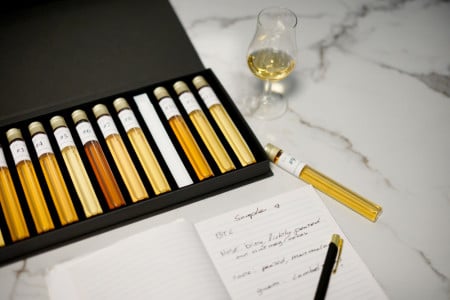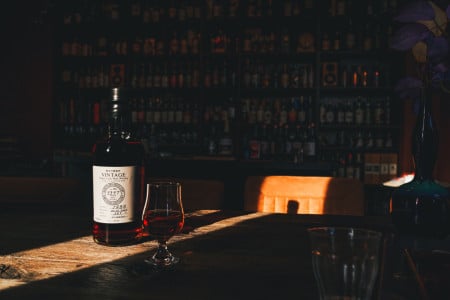Sarah Heller MW is Asia-Pacific's youngest Master of Wine. Sarah is not only a wine expert of the finest hour, but also a visual artist. Her Visual Tasting Notes are a unique project; an extraordinary rendition of a wine description.
You need to read these visual tasting notes from from top to bottom. The outline of the picture reflects the 'shape' of the wine. All other tasting components have been incorporated into the artwork as well, such as aromas, colours, acids and tannins.
This is how her visual art describes Château Petit Village 2010: "The nose opens with a big, woolly puff of musk, cloves and plums. The mid-palate is marked by darkness: licorice and oud, dense and exotic, intertwine with round, plump fruit with luscious contours, all close with a fine lacing of acid".
About the winery
You can find Château Petit Village on the Pomerol plateau in the hamlet of Catusseau. The name of the winery refers to this tiny French village. The first mention of the château dates back to 1785. Over the years, the winery has had several owners, one of which is the Gineset family. This family is a well-known négociant on the left bank and owns a number of wineries, including the famous Château Margaux. With the knowledge of that time, they planted many Cabernet Sauvignon vines at Petit Village. As much as 50% of the plantation consisted of Cabernet at the time, which was more than anywhere else on the entire right bank! Unfortunately, this decision did not bring any more fame and the wines stayed under the radar of the general public. But this all changed when Bruno Prats took over the château in 1971. He immediately decided to replace the Cabernet vines with Merlot and to renovate the cellar. The quality skyrocketed in no time, and so did the popularity. After Bruno left, the winery changed owners several times, and today it is owned by the Moulin family. They also own the adjacent Château Beauregard.
The vines are planted on a soil of clay and pebbles. This combination is good for heat retention and gives the vines a steady water supply at all times. The vineyards face south-west, so they enjoy plenty of sun.
About the wine
2010 was an exceptionally good vintage in Bordeaux. The summer was dry and August was very sunny, with cool nights up until the harvest in late September. This made the ripening process slow, but optimal. The delayed ripening process combined with the cool nights allowed the bunches to fully ripen while retaining the acids and without immature tannins.
In the past, the wine from Petit Village had a higher proportion of Cabernet Sauvignon, but this has been drastically reduced in recent years. The planting of Cabernet Sauvignon has been cut to a mere 7%. Merlot accounts for 75% and the remaining 18% consists of Cabernet Franc. The blend of 2010 consist of the same percentages as the plantings.
After the manual harvest, the bunches are selected through strict quality control and the stems are removed. Cement barrels are used for fermentation. The wine is then transferred to wooden barrels of 70% new French oak and 30% one-year-old wood barrels for malolactic fermentation and maturation. After 15 months of barrel ageing, the wine is bottled.





